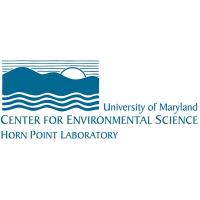Horn Point Laboratory Scientists Present Winter Community Science Series
CAMBRIDGE, MD (January 31, 2025)–The University of Maryland Center for Environmental Science’s Horn Point Laboratory presents a series of Community Science Talks in February and March. Horn Point scientists will engage the audience with interactive talks about their environmental science research, and its impact on the Eastern Shore and around the world. The talks are free, and take place at several locations in Dorchester and Talbot Counties. Each talk is 5:30-6:30pm.
“Billions of Baby Oysters—A Virtual Hatchery Tour” presented by Stephanie Alexander, Oyster Hatchery Manager
February 18, 5:30-6:30pm
Harriet Tubman Museum & Education Center
424 Race Street, Cambridge
Horn Point Laboratory’s oyster hatchery has produced billions of baby oysters, both to restore populations in the Bay and for the oyster farming industry. What does it take to raise healthy baby oysters? Hatchery Director Stephanie Alexander, who brings 20+ years of experience in the field, will lead attendees on a virtual tour of the famous hatchery.
“Virtuous Viruses” presented by Professor Joaquín Martínez Martínez
February 27, 5:30-6:30pm
Dorchester Center for the Arts, 321 High Street, Cambridge
Viruses are the most abundant biological entities on Earth, capable of infecting all forms of life! While they are often associated with diseases we want to avoid, they also play a critical and often overlooked role in maintaining the balance of our planet’s ecosystems. In the oceans, viruses help regulate biological and chemical processes and even serve as food for other microbes.
Join ocean virus ecologist Joaquín Martínez Martínez, a new faculty member at Horn Point, for a discussion on the fascinating vital role viruses play in marine life and ocean health. Discover how understanding viral infection is important to find solutions to pressing environmental challenges.
“Shells and rocks: paving the way to increase oyster habitat in Maryland’s Chesapeake Bay” presented by Professor Elizabeth North
March 4, 5:30-6:30pm
Talbot Community Center, Wye Oak Room,
10028 Ocean Gateway, Easton
Baby oysters prefer to grow on the shells of other oysters. They sense that this must be a good home for an oyster! But because oyster shells are in short supply, scientists are experimenting with other materials to find out what surfaces can support healthy populations. Professor Elizabeth North will take attendees on the science journey to evaluate solutions to increase oysters and their habitat in the Bay.
“When waters bloom: Harmful Algal Blooms” presented by Professor Pat Glibert
March 11, 5:30-6:30pm
Talbot Community Center, Wye Oak Room,
10028 Ocean Gateway, Easton
Every drop of water is teaming with life, including microscopic algae. Most are beneficial and provide the food on which all aquatic life depends. However, some are harmful, even toxic, not only for fish but people. These harmful events are increasing around the world. Being able to predict how algae will respond to changes in the environment is key to developing strategies to protect ecosystems and the food web. Phytoplankton ecologist, Professor Pat Glibert--author of a new comprehensive book on the subject--will lead attendees through the latest research on harmful algal blooms.
Pre-registration is requested. Attendees can register for one or more of the talks online:
bit.ly/HPLseries25
UNIVERSITY OF MARYLAND CENTER FOR ENVIRONMENTAL SCIENCE
Guiding our state, nation, and world toward a more sustainable future
The University of Maryland Center for Environmental Science (UMCES) is a leading research and educational institution working to understand and manage the world’s resources. From a network of laboratories spanning from the Allegheny Mountains to the Atlantic Ocean, UMCES scientists provide sound advice to help state and national leaders manage the environment and prepare future scientists to meet the global challenges of the 21st century.
HORN POINT LABORATORY
Understanding of the world’s estuarine and ocean ecosystems through a research program in oceanography, water quality, restoration of sea grasses, marshes and shellfish.
The Horn Point Laboratory, located on more than 800 acres on the banks of the Choptank River on Maryland's Eastern Shore, has advanced society’s understanding of the world’s estuarine and ocean ecosystems. Horn Point scientists are widely respected for their interdisciplinary programs in oceanography, water quality, restoration of sea grasses, marshes and shellfish and for expertise in ecosystem modeling. With ongoing research programs spanning from the estuarine waters of the Chesapeake Bay to the open waters of the world's oceans, Horn Point is a national leader in applying environmental research and discovery to solve society’s most pressing environmental problems.
University of MD Center for Environmental Science
-
Claire Otterbein Assis. Dir. for Outreach & Devel.
- January 31, 2025
- (410) 221-8335
- Send Email

